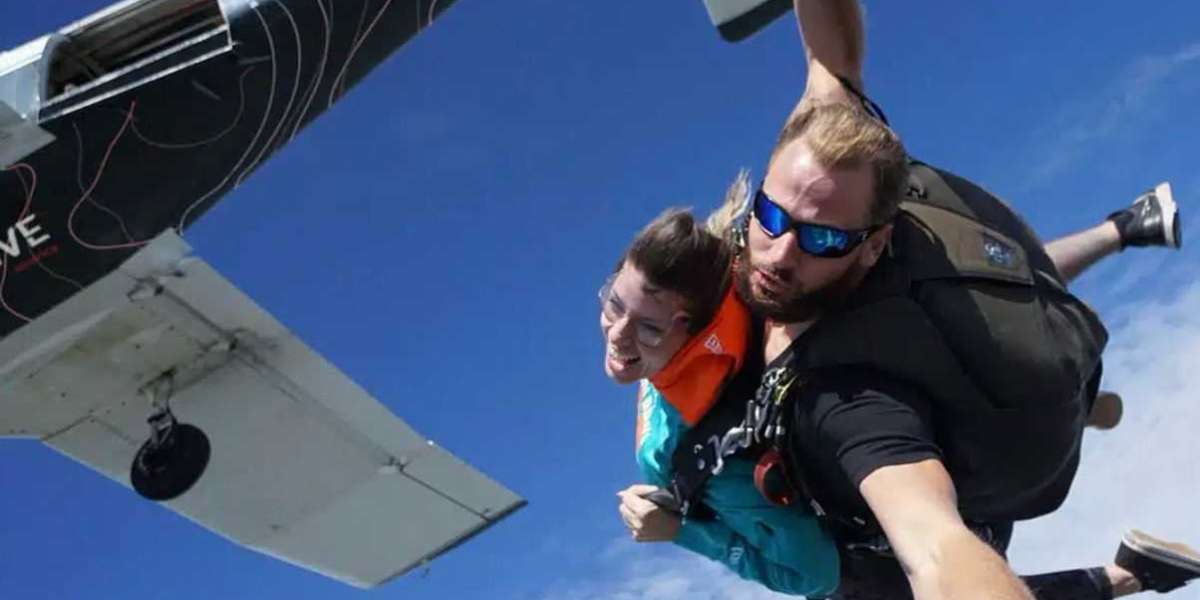Skydiving isn’t something most people do on a whim. It’s bold, intense, and, for many, deeply personal. Whether it’s a challenge to overcome fear, a birthday thrill, or just something that’s been sitting on your bucket list for too long, that first jump is something you’ll remember forever.
If you’re looking at skydiving near Washington DC or Baltimore, you’re in luck. The region has some incredible spots with experienced instructors and beautiful scenery. But before you book your jump, there are a few things worth knowing — especially if it’s your first time.
Not All Dropzones Are the Same
You might think all skydiving experiences are more or less identical: plane goes up, you fall out, you land, done. But that’s not the case.
Start with location. Choosing a dropzone close to DC or Baltimore means you won’t be dealing with a long drive or out-of-the-way rural roads. It makes the whole day smoother — especially if you’re trying to fit your jump into a busy schedule or you’re bringing family or friends along to watch.
But beyond location, look at reputation. Does the dropzone have well-reviewed instructors? Do they focus on first-timers? Is their equipment modern and well-kept? Safety should never feel like a question mark.
Bonus tip: The best spots don’t just drop you over cornfields — they show you views. Some of the closest skydiving centers to DC offer jaw-dropping views of the Shenandoah Valley and the Blue Ridge Mountains. That alone can make your first jump unforgettable.
What to Expect: The Real First-Time Experience
Here’s the truth: nobody feels 100% calm before their first skydive. Your stomach will flip during the plane ride, your heart will pound, and you’ll probably ask yourself what the hell you were thinking. That’s all part of it.
Most first jumps are tandem, meaning you’ll be securely harnessed to a trained instructor. They’ll handle all the technical parts — when to exit the plane, when to deploy the parachute, how to steer, how to land — so you can focus on staying present.
Here’s how it usually goes:
- You arrive and check in.
- There’s a short ground briefing where you learn what to expect and what to do with your body during the jump.
- You gear up, board the plane, and ascend to altitude (usually around 10,000–14,000 feet).
- When it’s time, the door opens. You jump.
- Freefall lasts about 30–60 seconds, then the parachute deploys and you glide for a few minutes before landing.
Simple enough — but nothing prepares you for the moment your feet leave that plane. That’s pure adrenaline, and it’s why people come back to do it again and again.
Safety: What You Need to Know (and Ask)
Tandem skydiving has a strong safety record, but that doesn’t mean you should skip asking questions. Reputable dropzones will welcome your curiosity — it shows you care about your experience.
Here are a few things to ask:
- Are the instructors licensed by the United States Parachute Association (USPA)?
- How many tandem jumps do they require for their instructors before they take on students?
- Do they use Automatic Activation Devices (AADs)? These are backup systems that deploy the parachute if the instructor is unable to.
- How old is the equipment, and how often is it inspected?
A professional skydiving center won’t dodge any of these. If you feel like someone’s brushing off your concerns, go somewhere else.
The Practical Stuff: What to Wear, Eat, and Expect
Don’t overthink it — comfort is key. Wear athletic clothes you can move in, and lace-up shoes that won’t fly off mid-jump. Layers are a good idea depending on the time of year, as it’s always colder at altitude.
Eat normally, but don’t go heavy. You don’t want to jump on a completely empty or overstuffed stomach. A light meal a couple hours before your jump is ideal.
You’ll also want to be aware of time. Even if your jump is scheduled for noon, you might be there for several hours. Weather, wind, and air traffic delays can stretch out the day. Don’t book your jump and then plan to be somewhere else an hour later — give yourself space to enjoy the experience without rushing.
And yes, you’ll likely have the chance to get video or photos. They’re not cheap, but they’re often worth it. That face you make mid-freefall? You’ll want to see it later.
Where to Go Near DC and Baltimore
If you’re based in the DMV area and looking for a place to jump, there are a few solid options within a 1–2 hour drive. Choosing the right spot comes down to proximity, scenery, and instructor quality.
One standout option is skydiving baltimore — it’s one of the closest dropzones to Washington DC and offers views that go well beyond the average. With easy access from both DC and Baltimore, it’s a great choice if you want the thrill without the hassle of a long drive. Their team also focuses heavily on first-time jumpers, which can really help if you’re feeling nervous.
Final Thoughts: It’s Not Just a Jump — It’s a Shift
Here’s what no one tells you before your first skydive: it’s not just fun, or scary, or wild. It changes something. You exit the plane one person and land as someone else — someone who faced down a fear and came out grinning.
That feeling stays with you. Long after the jump, long after the adrenaline wears off, you’ll still feel it. The view, the wind, the weightlessness, the moment of silence after the parachute opens — it all becomes part of a memory that’s hard to describe and harder to forget.
So if you're thinking about skydiving near DC or Baltimore, go for it. Find a place that treats your first jump with the care it deserves, prepare well, and let yourself enjoy the ride.
You won’t regret it.













